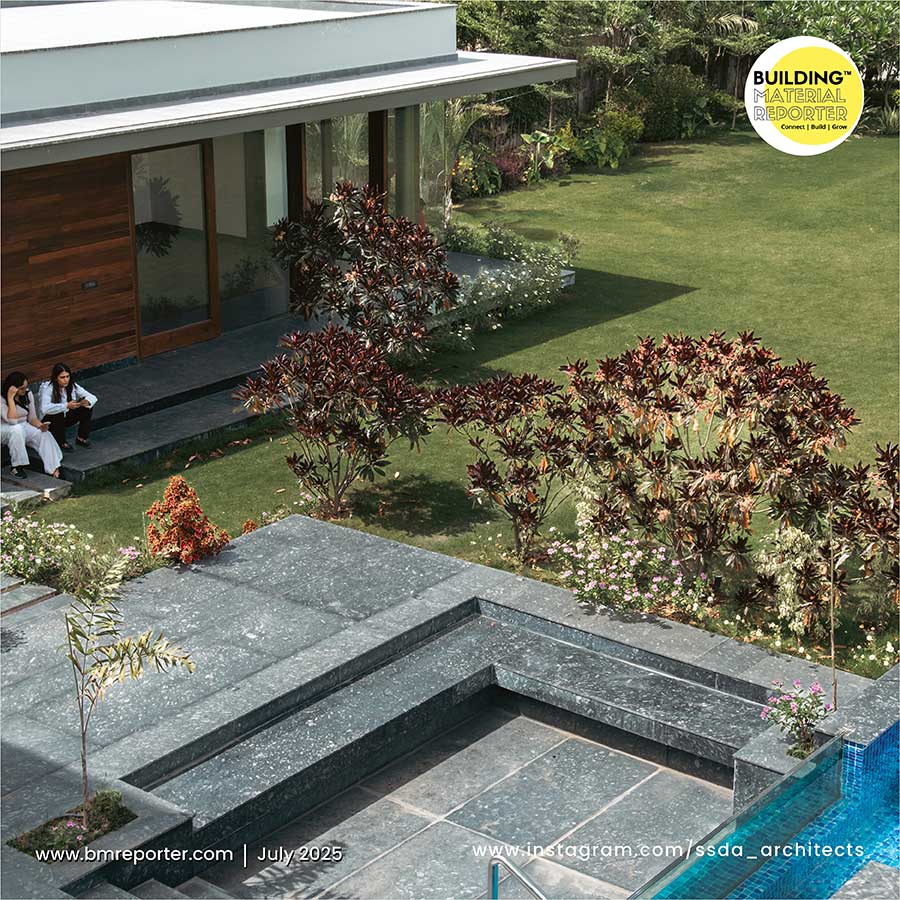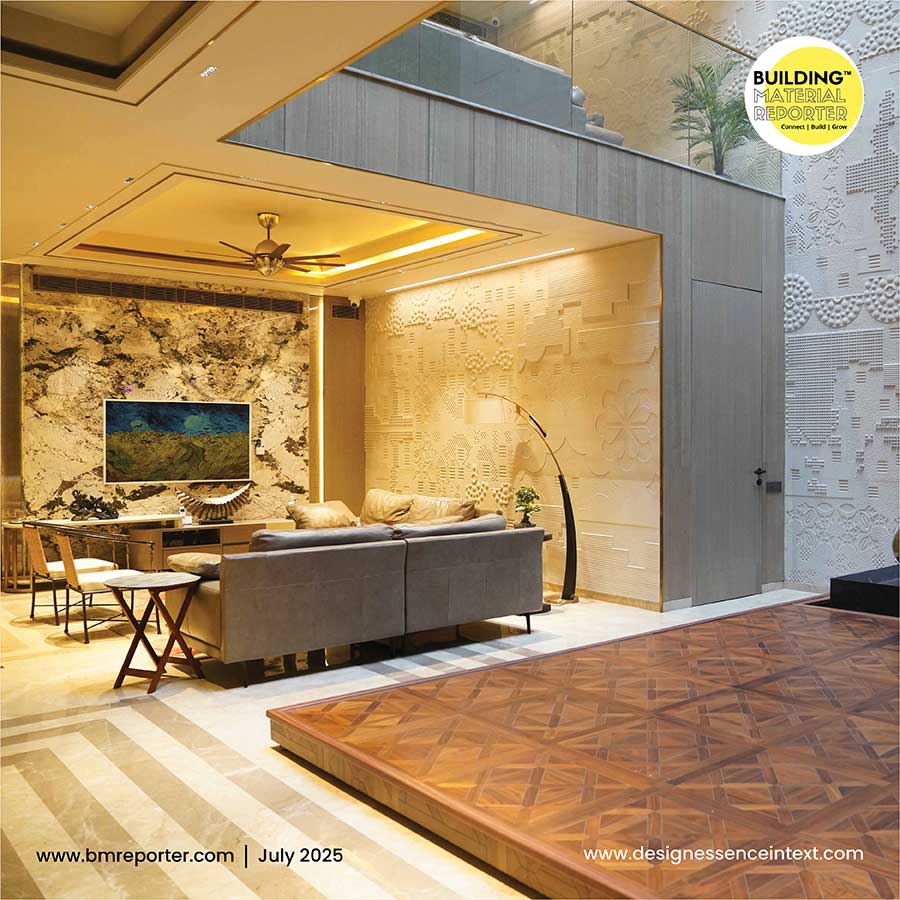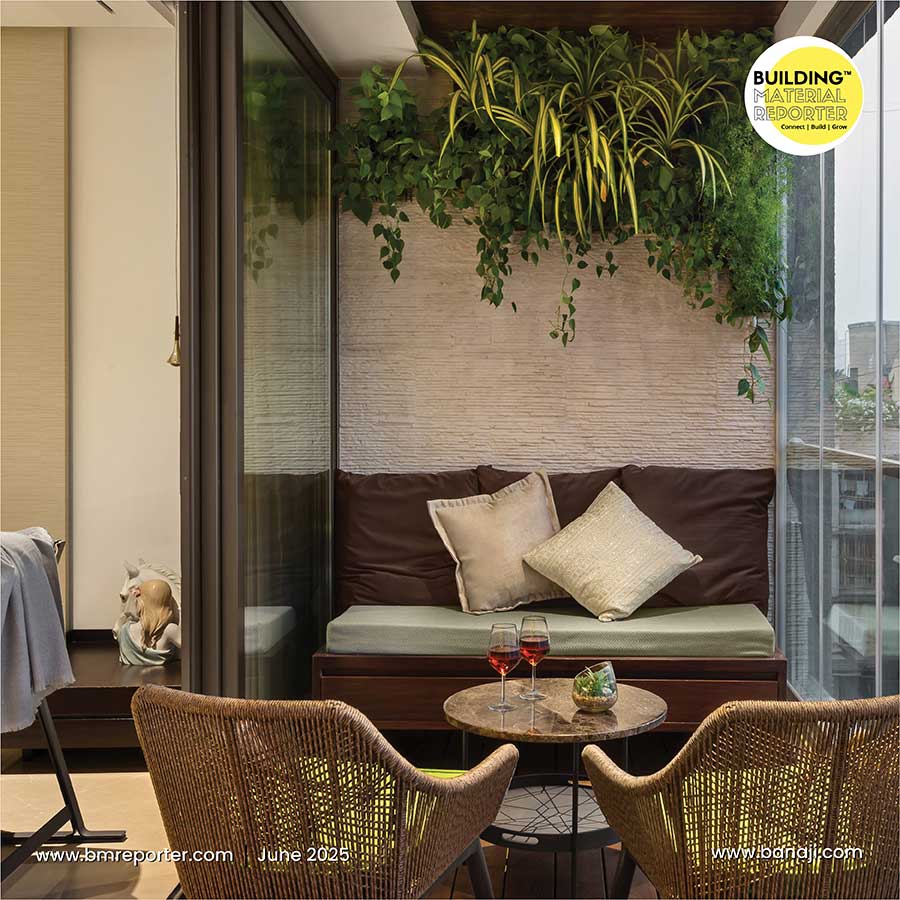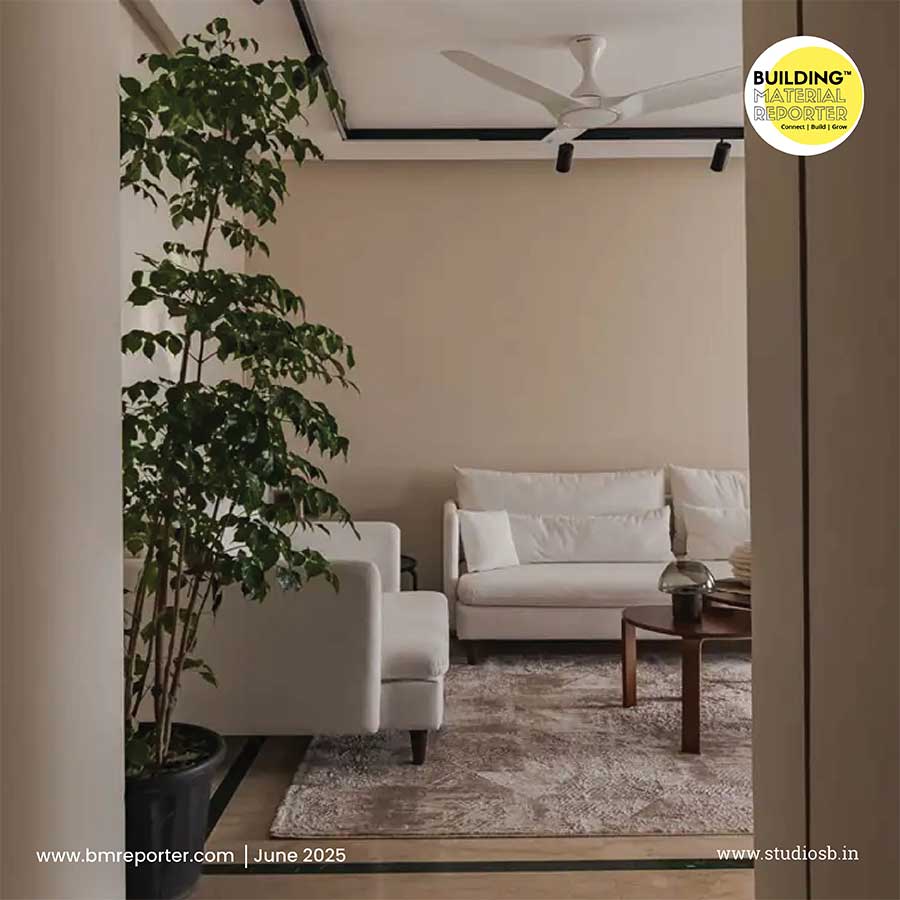A Holistic Journey Toward Sustainable Living
- November 29, 2023
- By: Ar. Priyanshi Shah
- INFLUENCERS
.jpg)
Adopting a holistic approach to sustainable living entails a thorough examination of a project's environmental, social, and economic impacts across its entire life cycle. The objective is to craft built environments that not only prioritize environmental stewardship but also demonstrate social responsibility and economic viability. Smart home technology continues to evolve, offering innovative solutions for homeowners seeking greater control, energy efficiency, and sustainability. In the context of solar-powered homes, these technologies contribute to a more intelligent and responsive approach to energy management. As people started to seek sustainable living options and more environmentally conscious design, solar-powered home design concepts gained popularity in today’s time. The following are some major themes in conscious home design that were becoming popular and let's delve into it.
Smart Home Technology
Smart home technology integrates advanced digital and automated systems within residential spaces to enhance convenience, efficiency, and control. In the context of solar-powered homes, smart home technology plays a crucial role in optimizing energy usage and monitoring solar energy systems. Key aspects of smart home technology include real-time solar energy monitoring, energy management systems, smart thermostats, smart lighting, appliance automation, energy storage integration, home security, and voice control systems.
Smart home systems provide real-time monitoring of solar energy production, allowing homeowners to track performance, assess energy generation, and identify trends. They also offer energy management features, such as setting schedules for appliances and adjusting thermostat settings remotely. Smart thermostats can coordinate with solar energy production to maximize energy efficiency. Automated lighting systems can optimize solar energy usage during the day and minimize energy consumption at night.
Implementation of Solar Panels
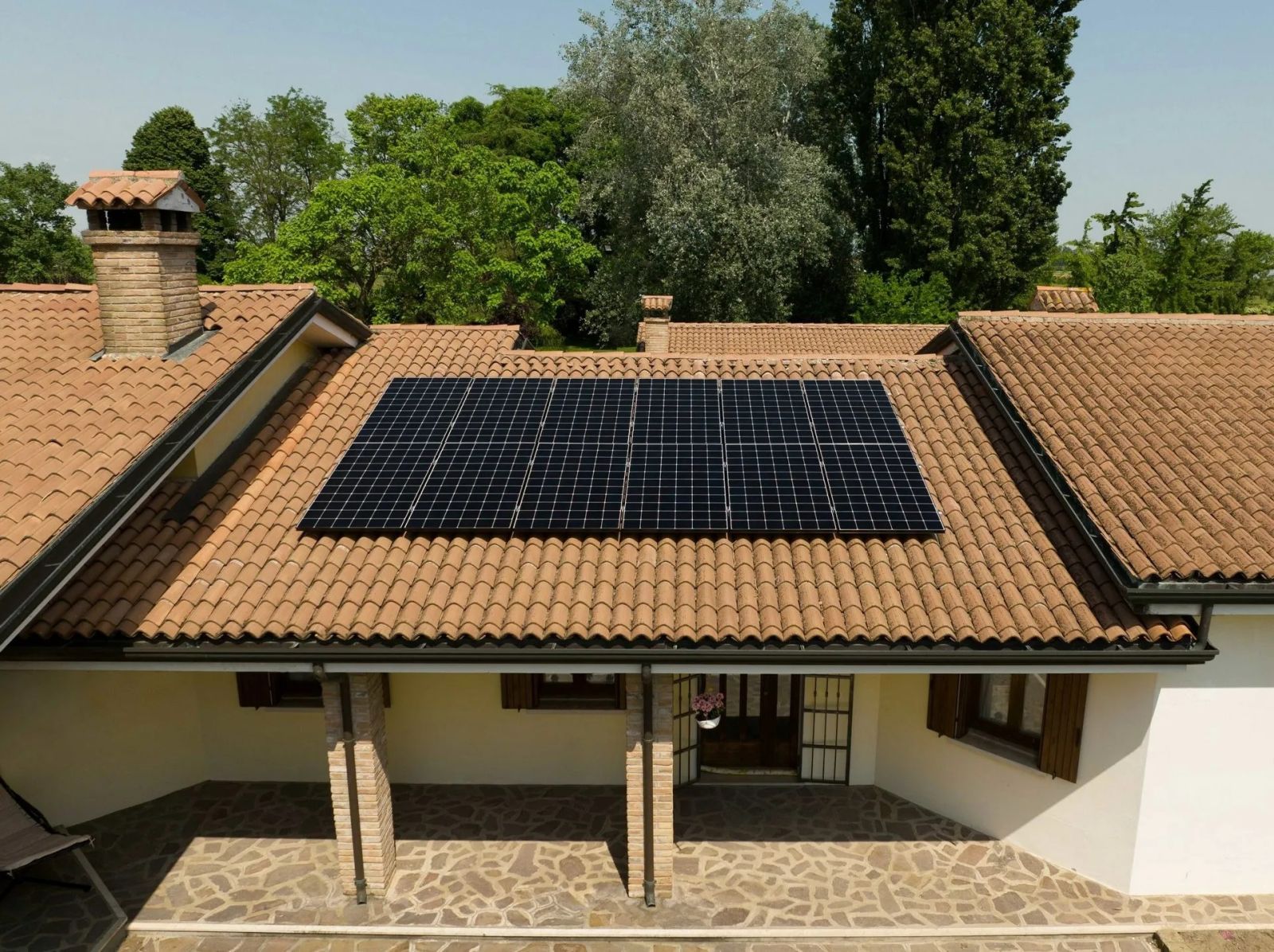 Implementation of Solar Panels
Implementation of Solar Panels
Solar panels became a ubiquitous feature in sustainable home design, with rooftop installations becoming standard practice. Progress in solar technology not only improved energy efficiency but also facilitated the development of aesthetically pleasing panel designs. Homeowners were increasingly motivated to seamlessly integrate these solar solutions into their architectural plans, embracing both functionality and visual harmony with their homes. These trends attempted to limit dwellings' carbon footprints, cut down on electricity costs, and lessen reliance on conventional energy sources by utilizing solar energy.
Solar Roof Tiles
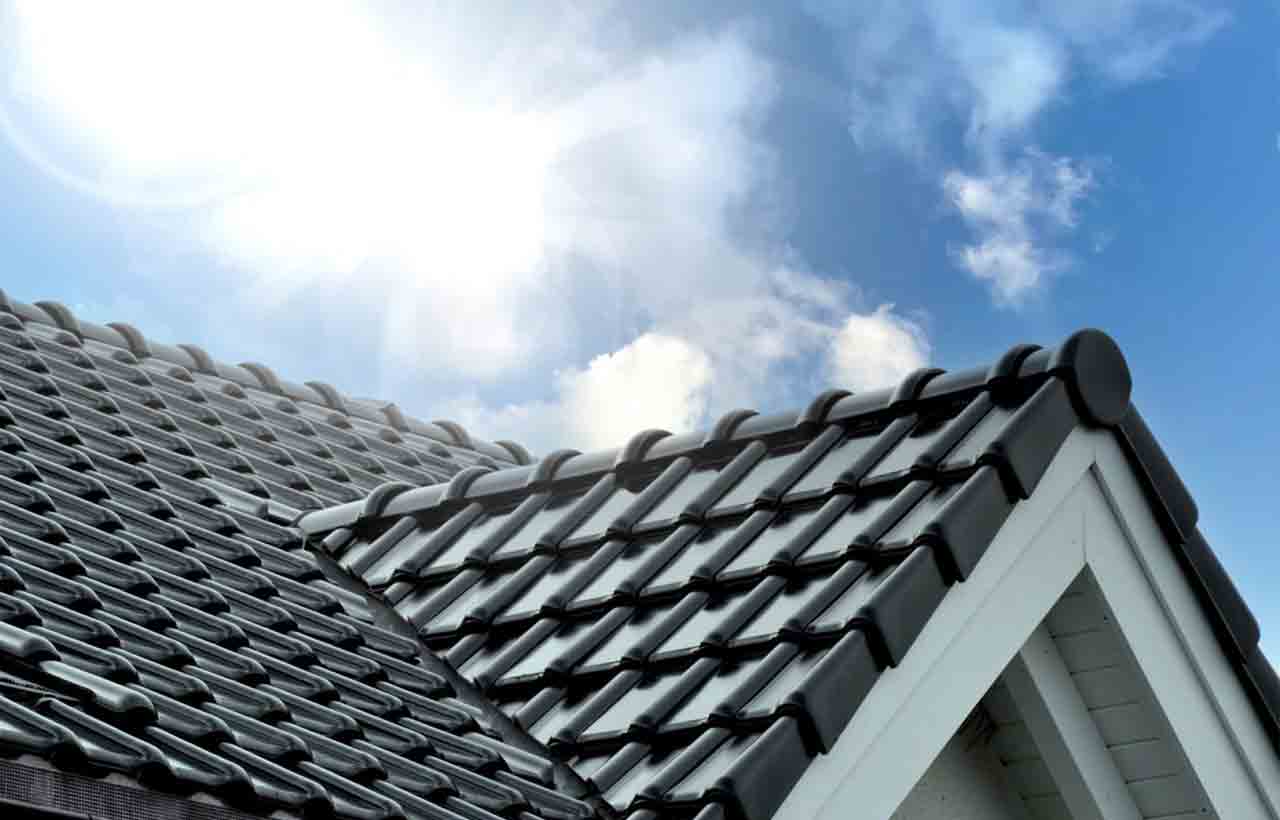 Implementation of Solar roof tiles
Implementation of Solar roof tiles
Solar roof tiles emerged as a sought-after alternative to the conventional use of solar panels. This innovative approach gained traction due to its capacity to mimic traditional roofing materials, offering a discreet and visually appealing solution for harnessing solar energy. Homeowners were drawn to the seamless integration of sustainable technology with the aesthetic considerations of their roofs.
Energy Storage Solutions
.jpg) Material and Expression: House That Rains Light
Material and Expression: House That Rains Light
The adoption of energy storage solutions, including home battery systems, became increasingly prevalent. This integration empowered homeowners to store surplus energy produced during daylight hours, creating a reservoir for use during times of reduced solar output or heightened energy demand. This trend underscored a shift toward greater energy autonomy and efficiency in solar-powered homes.
Community Solar Projects
The prevalence of shared or community solar projects increased, with multiple households pooling resources to invest in and reap the benefits of a centralized solar installation. This collaborative approach enabled individuals without suitable rooftops for solar panels to participate in and access solar energy. The community solar model facilitated a broader and more inclusive adoption of sustainable energy practices, fostering a sense of collective responsibility for environmentally friendly initiatives.
.jpg) Adharshila - A Sustainable Community Learning Center
Adharshila - A Sustainable Community Learning Center
Solar water heating systems garnered increased popularity, offering an environmentally friendly alternative to conventional water heating methods. These systems harnessed solar energy to efficiently heat water for various domestic uses, marking a shift towards sustainable and energy-efficient practices in home utilities. Homeowners increasingly embraced this eco-conscious approach to meet their hot water needs, contributing to a more sustainable and energy-responsible lifestyle.
Holistic Approach to Sustainable Design
.jpg) Ayna Burir Adar: Thoughtful Making of Space
Ayna Burir Adar: Thoughtful Making of Space
A holistic approach to sustainable design focuses on the environmental, social, and economic impacts of a project throughout its life cycle. It aims to create built environments that are not only environmentally friendly but also socially responsible and economically viable. Key principles include energy efficiency, water conservation, material selection, waste reduction, health and well-being, community engagement, accessibility, and economic considerations.
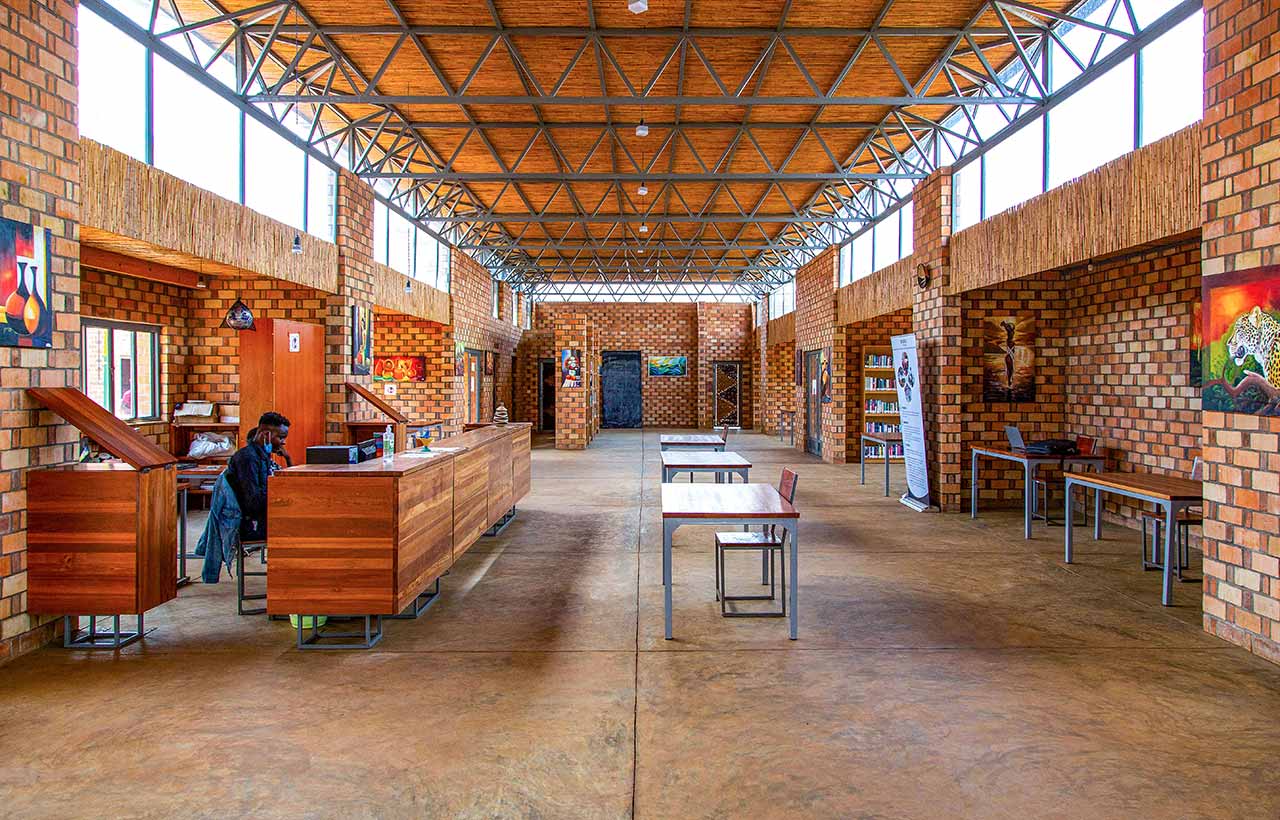 Learning & Sports Center: General Architecture Collaborative
Learning & Sports Center: General Architecture Collaborative
The synergy between smart home technology and solar energy management has witnessed a growing trend. Home automation systems were increasingly integrating features that allowed homeowners to oversee and regulate their solar panels and energy consumption directly from smartphone applications. This not only provided a convenient way to stay in control but also facilitated the optimization of energy efficiency, ultimately contributing to reduced energy expenses.
In addition to the widespread adoption of solar panels, there was a heightened emphasis on incorporating energy-efficient design principles. This encompassed the implementation of well-insulated building structures, the integration of energy-efficient appliances, and the incorporation of smart technologies aimed at minimizing overall energy consumption. The holistic approach to sustainable design extended beyond just solar solutions, encompassing various elements to create homes that were both environmentally conscious and energy-efficient.
Environmental considerations include energy efficiency through efficient HVAC systems and renewable energy sources, water conservation through water-saving technologies, material selection with sustainable materials, and waste reduction through recycling and easy reuse. Social considerations include health and well-being, community engagement, and accessibility. Economic considerations include life cycle costing, return on investment (ROI), and resilience.
The integrated design process encourages collaboration among architects, engineers, landscape architects, and other stakeholders from the early stages of a project to optimize sustainability outcomes. Systems thinking considers the interdependencies of various design elements and systems to create a cohesive and synergistic design. Adaptive reuse and regenerative design aim to restore or enhance ecosystems, going beyond sustainability to actively contribute positively to the environment.
Green building certifications like LEED and BREEAM are used to achieve certification and recognition for sustainable building practices. A holistic approach recognizes that environmental, social, and economic aspects are interconnected, and addressing one aspect without considering others may not lead to truly sustainable outcomes.


.jpeg)


